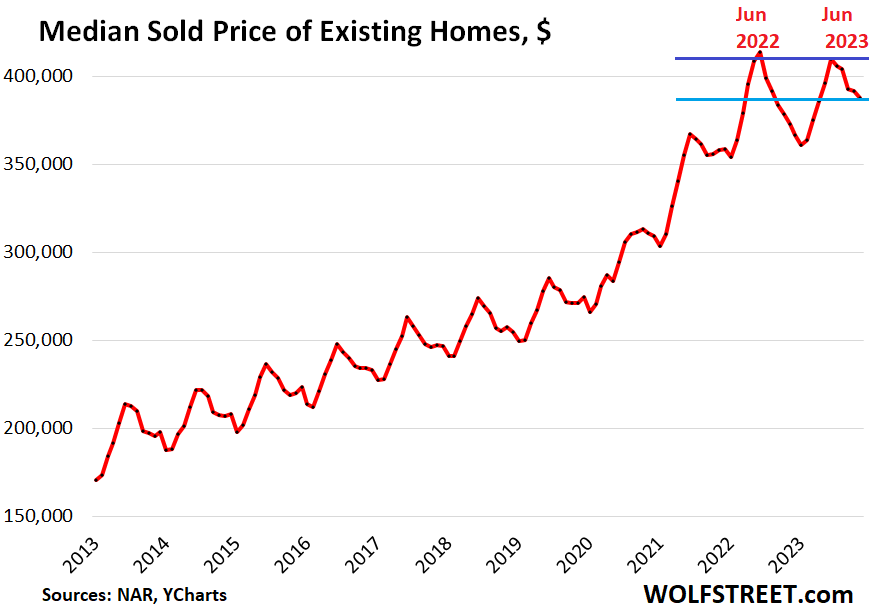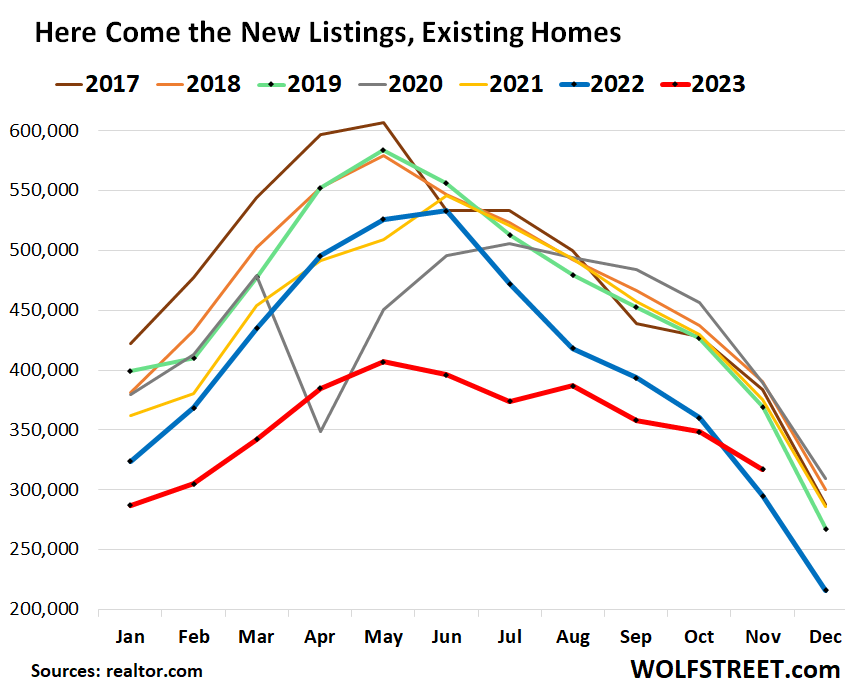Here Come the New Listings of Existing Homes, Prices Drop Further, Demand Remains at
[ad_1]
Active listings rise to highest in over three years.
By Wolf Richter for WOLF STREET.
The national median price of existing single-family houses, condos, and co-ops whose sales closed in November dropped to $387,600, down by 6.3% from the peak in June 2022, according to data from the National Association of Realtors (NAR) today.
2023 is the first year since the Housing Bust when the seasonal high in June was below the all-time high a year earlier. In other words, June 2023 was the first “lower high” since the Housing Bust (purple line in the chart) and prices have dropped further since June along seasonal patterns (historic data via YCharts):

Prices of new houses, sold by homebuilders, have already dropped 18% from the peak a year ago, as builders aggressively target the new reality with lower prices, smaller houses, “de-amenitizing” spec houses (cheaper appliances, countertops, etc.), and big mortgage-rate buydowns, thereby successfully competing with homeowners selling their existing homes (which we discussed here).
The New Listings are coming out of the woodwork.
New listings of existing homes normally drop after the spring selling season and plunge going into the holidays.
But in November, new listings fell by only 22,000 to a total of 316,900; while a year ago, they plunged by 65,280 over the same period. Between 2017 and 2022, they dropped on average by 56,000 over the same period, according to data from Realtor.com. They’d risen in August, when they normally drop. And in the other months of the second half, they barely dipped, when they normally drop sharply.
So in November, new listings (red line) were higher year-over-year for the first time since May 2022 (blue line). This is a good sign for inventory of vacant homes that is now slowly starting to come out of the woodwork.

When an existing homeowner buys another home because of a move or trying to upgrade or downgrade, they also have a then vacant home that they moved out of. Normally they would sell the vacant home. So they take one home off the market (the one they bought) and they put one home on the market (the one they’re trying to sell). So this creates one new listing and one sale, and the impact on inventory overall = +1 -1 = 0.
First-time buyers change the equation, taking one home off the market without putting another home on the market.
And other situations change the equation the other way, putting a home on the market without taking a home off the market such as: new home construction, or when a homeowner moves into a rental, moves into a long-term care facility, dies, moves overseas, etc.
But during the pandemic-era price spike, many homeowners decided to hang on to their newly vacant homes to benefit from the price spike all the way to the top. But the price spike ended in 2022. So we’ve seen vacant homes show up on the rental market, only to be withdrawn, and we’ve seen them show up in the vacation rental market, as homeowners attempt to…
[ad_2]
Read More: Here Come the New Listings of Existing Homes, Prices Drop Further, Demand Remains at
